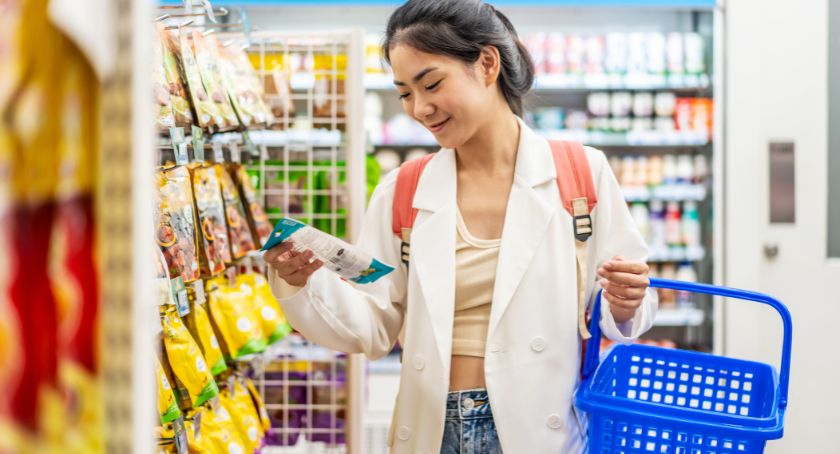Features
Consumer Snack Habits and Impact on Public Health
Ultra-processed foods continue to comprise a large portion of American diets.

By: Sean Moloughney

Photo: TeTe Song | AdobeStock
The Dietary Guidelines for Americans recommend that 85% of calories per day come from nutrient-dense foods like fruits, vegetables, protein, dairy, and grains. However, approximately 60% of calories that U.S. adults actually consume come from ultra-processed foods (UPFs), including snacks and baked goods.
In recent years, research has associated UPFs with certain health issues. According to a 2021 study published in JAMA: “Although the processing of foods plays a critical role in improving food security and ensuring food safety, ultraprocessed foods are typically high in added sugar, trans-fat, sodium, and refined starch and low in fiber, protein, vitamins, and minerals. Cohort studies provide consistent evidence suggesting that high intake of ultraprocessed foods contributes to obesity and cardiometabolic risk factors in children and adults, and is associated with an increased risk of cardiovascular diseases, certain types of cancers, and total mortality in adults.”1
American diets lean heavily on snacks. Currently, consuming multiple snacks is the norm, with 78% consuming two or more on any given day. Among adults aged 20 years and older, 95% consume one or more foods and/or beverages at a snack on the intake day.
Less is known about younger people. However, in a serial cross-sectional study of nationally representative data from 33,795 U.S. youths aged 2-19 years, the estimated percentage of total energy consumed from UPFs increased from 61.4% in 1999 to 67.0% in 2018, whereas the percentage of total energy consumed from unprocessed or minimally processed foods decreased from 28.8% to 23.5%.1
Barriers to Healthy Eating
A June 2024 survey exploring Americans’ attitudes on food, diet, health, and nutrition found that respondents see food price (72%), unhealthy eating patterns (54%), and affordability of healthy foods (48%) as the greatest food issues facing the U.S.2
The survey, commissioned by Research!America in partnership with the American Heart Association, surveyed 2,000 U.S. adults on a variety of food and nutrition issues. Results showed that Americans are aware of the high level of obesity and unhealthy eating, with 91% recognizing unhealthy eating as a problem in the U.S.
A strong majority (77%) reported that they would like to eat a healthier diet. However, respondents pointed to the cost of healthy food (60%) as the most significant barrier to eating a healthier diet.
According to a 2024 data brief from the USDA, snacks contribute 24% of consumer’s daily intake of energy and 30% or less of nearly all nutrients analyzed. However, they account for 40% or more of total intake of added sugars, alcohol, and caffeine. Snacks contribute on average 7 teaspoon equivalents to added sugars intake, 6 grams to alcohol intake, and 70 milligrams to caffeine intake.3

FDA Actions
In January, the FDA proposed requiring a front-of-package (FOP) nutrition label on most packaged foods to provide accessible, at-a-glance information “to help consumers quickly and easily identify how foods can be part of a healthy diet.”
The FDA’s proposed FOP nutrition label, referred to as the Nutrition Info box, would complement the Nutrition Facts label that is required on most food packages.
“Displaying simplified, at-a-glance, nutrition information that details and interprets the saturated fat, sodium, and added sugar content of a food as ‘Low,’ ‘Med,’ or ‘High’ on the front of food packages would provide consumers with an accessible description of the numerical information found in the Nutrition Facts label. Current federal dietary recommendations advise U.S. consumers to limit these three nutrients to achieve a nutrient-dense diet within calorie limits.”
In late December 2024, the agency also announced a final rule governing which products can use the claim “healthy.” The new rule requires that foods, beverages, and dietary supplements that use the term “healthy” must contain a certain amount of food from at least one of the food groups or subgroups outlined by the Dietary Guidelines for Americans, including fruits, vegetables, protein foods, dairy, and grains. There are also limits on the amount of saturated fat, sodium, and added sugars.
According to the agency, the new rule will help consumers more easily identify foods that are the foundation of a healthy dietary pattern, and could potentially result in the development of healthier foods.
Households with at least one GLP-1 user reduce grocery spending by approximately 6% within six months of adoption, with higher-income households reducing spending by nearly 9%. These reductions are driven by significantly larger decreases in purchases of calorie-dense, processed items, including a 11% decline in savory snacks.
Innovation
Meanwhile, SPINS noted a decrease in the number of new products launched in the food and beverage department, in recent years. “Coming out of COVID, many manufacturers chose to focus on their core products as they dealt with supply chain issues. As that began to abate, rising interest rates meant that investment dollars had began to dry up thus, brands had to be more diligent around spending, causing a shift to a more profitable growth strategy and a more disciplined R&D strategy,” the company said in its 2025 Industry Update & Trends Predictions.
“However, fewer newer products doesn’t necessarily mean less innovation. Rather, it means that brands are evolving. R&D strategies have evolved with tight investment dollars, yet innovation is still critical to pursue to stay ahead. Approaching innovation with disciplined, quality brand launches, has proven to be a winning formula. This has led many to cut off the tail of their product lines and focus instead on possible new categories that might yield bigger impact.”
Products in snack and beverage categories with 15+ grams of protein amount to $4.9 billion, according to SPINS; that’s nearly 70% of the sales volume attributed to the protein supplements category. “With 9.3% growth, we predict high protein innovation to continue across a wide range of categories — from pantry staples to frozen meals,” SPINS said.
GLP-1 Impact
After more than a decade of steadily rising obesity rates, 2023 marked the first recorded decline, likely due to the growing adoption of GLP-1 receptor agonist drugs like Ozempic, Wegovy, and Mounjaro. An estimated 12% of consumers have already tried a GLP-1.
The widespread and growing adoption of these new weight loss drugs is already significantly reshaping consumer food purchasing patterns.
According to research published by Cornell University and Numerator, “Households with at least one GLP-1 user reduce grocery spending by approximately 6% within six months of adoption, with higher-income households reducing spending by nearly 9%. These reductions are driven by significantly larger decreases in purchases of calorie-dense, processed items, including a 11% decline in savory snacks. In contrast, we observe directional increases in nutrient-dense purchases, such as yogurt and fresh produce.”4
Given an average monthly grocery expenditure of $630, a 6% reduction translates to an annual reduction of $416 per user. “In addition to grocery spending, households also reduce food-away-from-home expenditures, with breakfast spending declining by nearly 4% and dinner spending decreasing by 6%,” the report said.
References
1. Wang. L, et al. (2021). Trends in Consumption of Ultraprocessed Foods Among US Youths Aged 2-19 Years, 1999-2018. JAMA. 2021;326(6):519–530. doi:10.1001/jama.2021.10238. https://jamanetwork.com/journals/jama/fullarticle/2782866
2. Brown, E. (2024). Americans Recognize Accessibility and Cost Are Top Challenges in Improving Diet. Research!America, July 15, 2024. https://www.researchamerica.org/blog/americans-recognize-accessibility-and-cost-are-top-challenges-in-improving-diet/
3. Sebastian, R. et al. (2024). Snack Consumption by U.S. Adults What We Eat in America, NHANES 2017 – March 2020. Food Surveys Research Group Dietary Data Brief No. 53. April 2024. https://www.ars.usda.gov/ARSUserFiles/80400530/pdf/DBrief/53_Snacks_Consumption_by_Adults_1720.pdf
4. Hristakeva, S. et al. (2024). The No-Hunger Games: How GLP-1 Medication Adoption is Changing Consumer Food Purchases. Cornell SC Johnson College of Business Research Paper Dec. 27, 2024 https://papers.ssrn.com/sol3/papers.cfm?abstract_id=5073929


